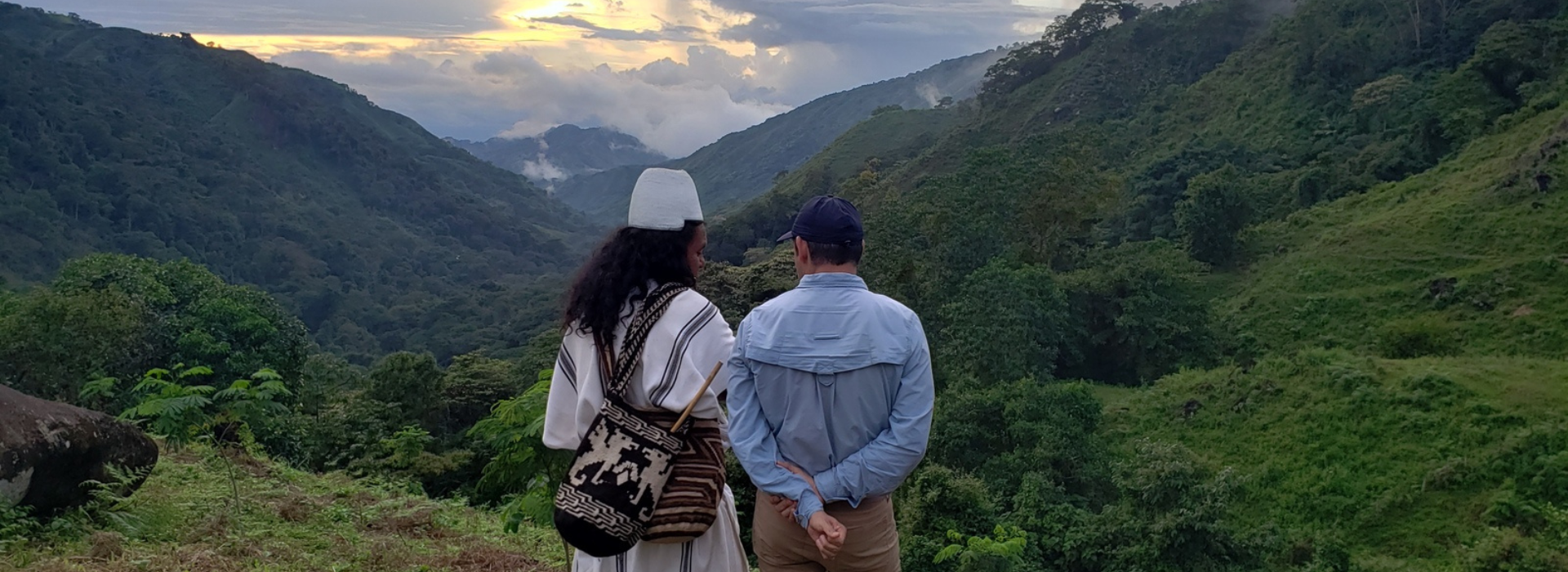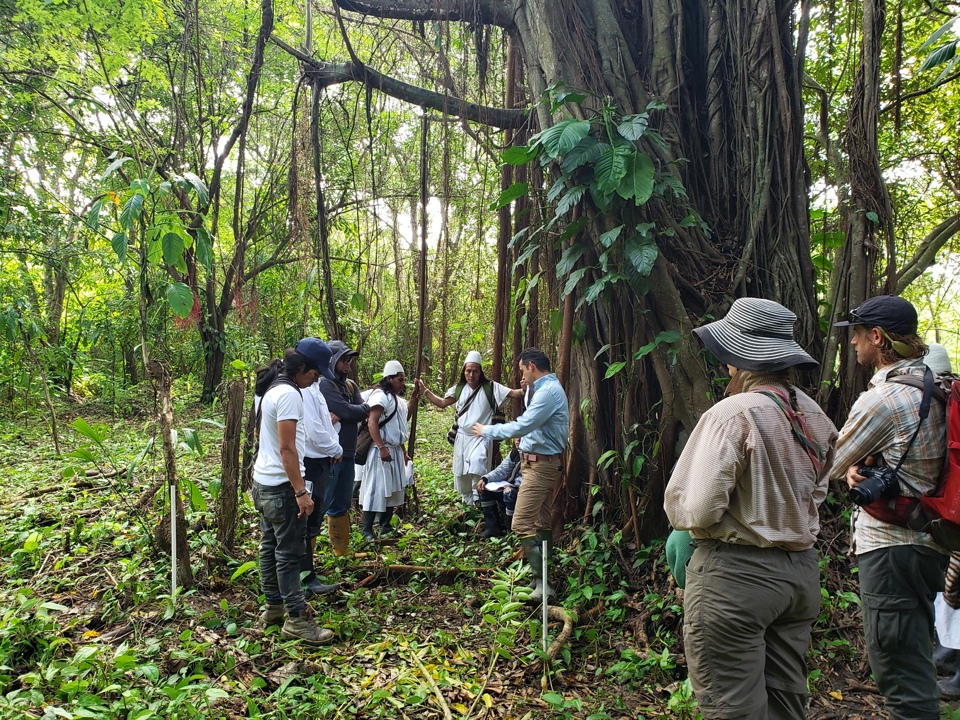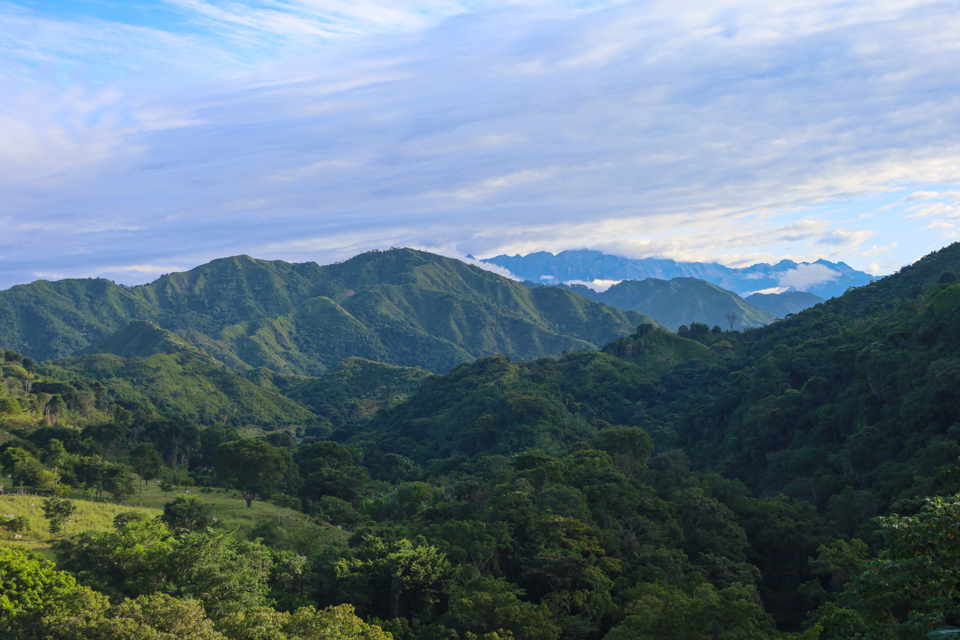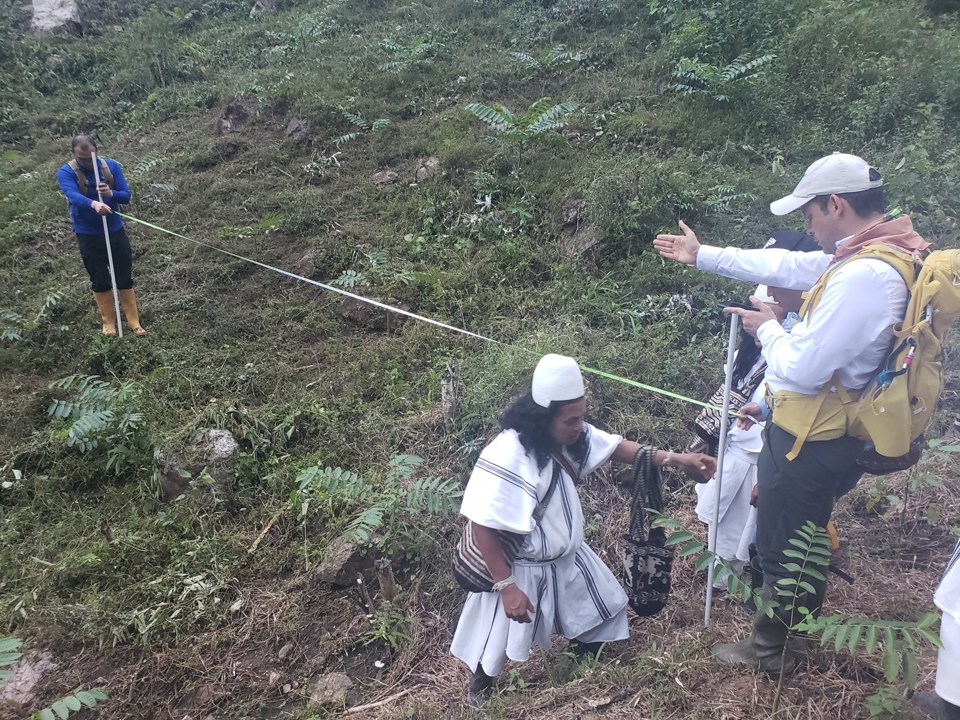To preserve Colombia’s sacred mountains, follow its spiritual protectors
July 24, 2023 | By Beth Szymkowski
To the Arhuaco people, Earth is a living being. Rivers are veins flowing into its heart — and their home — in the Sierra Nevada de Santa Marta mountains. According to their Law of Origin, their job is to keep that vital organ beating.
Environmental scientists have come to a similar conclusion. Perched in northernmost Colombia, with peaks over 18,000 feet yet only 26 miles from the Caribbean coast, the mountain range is home to a large concentration of threatened mammals, birds and amphibians. The glaciers that feed the region’s rivers have largely melted, and the high-altitude grasslands are drying up. Its diverse ecosystems are crucial to any solution to the climate crisis.
Now, after historically avoiding contact with outsiders, the Arhuaco are partnering with environmentalists to reverse the ravaging effects that colonization and generations of conflict, mining, development and climate change have had on their sacred land. This includes sharing their deep knowledge of the region.
“The question we have to ask ourselves is ‘What kind of ancestor will I be?’” says Gunzareiman Villafaña Torres, an economist with the Cabildo Arhuaco del Magdalena y la Guajira Sierra Nevada, the governing body of the Arhuaco people, who has been working as a coordinator on the restoration project.

Staffers from Conservation International Global and Colombia visited the Arhuaco indigenous communities in the Sierra Nevada de Santa Marta, where the communities are restoring their ancestral lands as part of the Priceless Planet Coalition's goal to restore 100 million trees worldwide. (Photo credit: Ruth Metzel/Conservation International©)

The Sierra Nevada de Santa Maria is the world's tallest coastal mountain range, with peaks rising nearly 18,000 and yet only 26 miles from the Caribbean Sea. (Photo credit: Tim Perez/Conservation International©)

The spiritual leaders of the Arhuaco community, typically closed to outsiders, guided Conservation International in the restoration project, including choosing which type of trees to plant and which areas needed the most protection. Here, they are setting up tree monitoring plots to ensure restoration is successful. (Photo credit: Ruth Metzel/Conservation International©)
One of these partnerships is with the global environmental group Conservation International. “If we really try to align our objectives with what they say, we believe it is the best chance for us to mitigate and to adapt to climate change,” explains Kevin Ocampo, socioeconomic analysis manager at Conservation International Colombia.
With Mastercard and the World Resources Institute, CI helped found the Priceless Planet Coalition, which has a goal of restoring 100 million trees globally. In Colombia, the work is currently focused on the Musesi project, whose name means “to restore or rebuild” in the Arhuaco’s language, Ikʉ.
Conservation International originally approached the Arhuaco because of their strong spiritual and political leadership structure. They are the largest of the four Indigenous groups in the region, with population estimates that range from 15,000 to roughly 35,000 people.
And while the Arhuaco believe that with time, nature by itself would eventually correct the damage to their home, the Conservation International team started a conversation with their spiritual leaders, the mamos, to build a respectful relationship and encourage them to help speed the process along. The relationship was built on the belief that the Arhuaco inherently know what is best. They view themselves as “big brothers” who hold valuable wisdom to be shared. Conservation International gladly played the role of “little brother,” following their guidance.
That meant the Arhuaco decided which types of trees to plant. They chose which areas most needed reforestation and protection. They picked the families that would do the actual work of growing saplings in a nursery and transplanting them to their final home in the ground.
Conservation International advised on technical issues such as the logistics involved in the project, Ocampo said. “We gave an assessment to help them pick the best sites possible so the project could have the best results possible.”
At times, Conservation International provided the tools and materials to build nurseries or expand existing ones. They advised on problems during the growing process and provided needed goods and equipment. They helped ensure that the participating Arhuaco families had the proper skills and that the restoration site would be maximized for success. In the end, 429 families in 14 communities in three watersheds grew the seedlings and planted the trees.
The program received initial funding from Colombia’s minister of the environment. However, the Priceless Planet Coalition — which includes nearly 140 corporate partners, including sustainably minded merchants, fintechs and global banks that believe in the power of collective action to reverse the impact of climate change — has since helped sustain it and set up monitoring systems that allow other Conservation International teams working in other regions to share their successes and challenges.
The initiative has already exceeded its goal by planting more than 700,000 trees and has restored 2,500 acres of land, but the terrain itself was one of the main challenges: At times, people carried supplies for hours on foot or with the help of animals. In one case, a technician carrying a progress report was crossing a river and the report got swept away.
“I can’t deny that it’s been hard,” Villafaña Torres says. “I’m not going to romanticize it. But it has been necessary for opening new dialogues and acting as a guide for future projects for how we are going to approach this with other organizations.”
The team also dealt with language issues between Spanish, English and Ikʉ, Ocampo says, but everyone rose to the challenge: “Everyone is willing to learn. Everyone is willing to get the job done. That is really what’s important.”